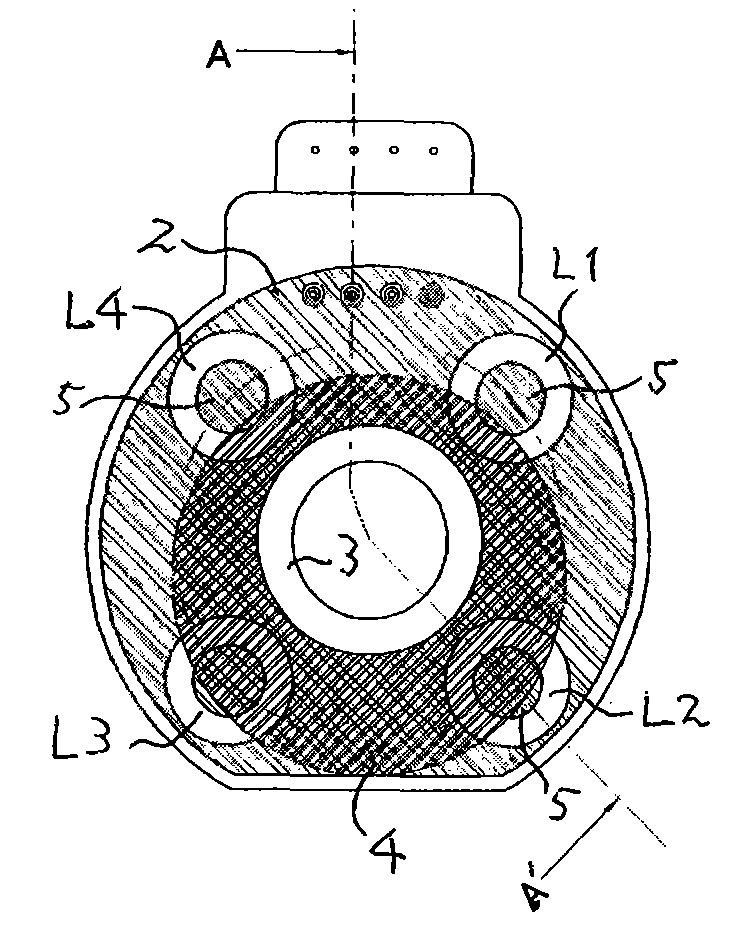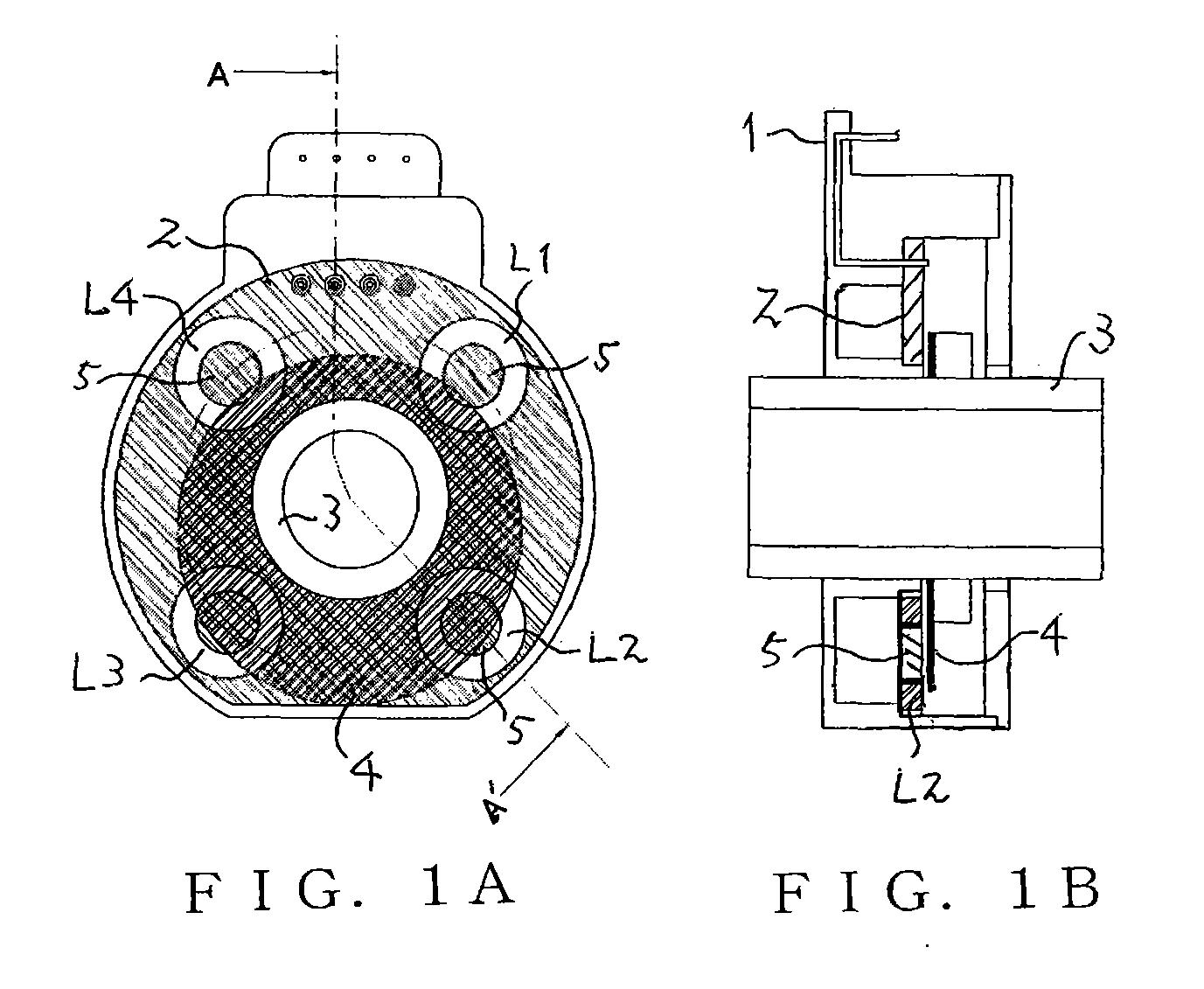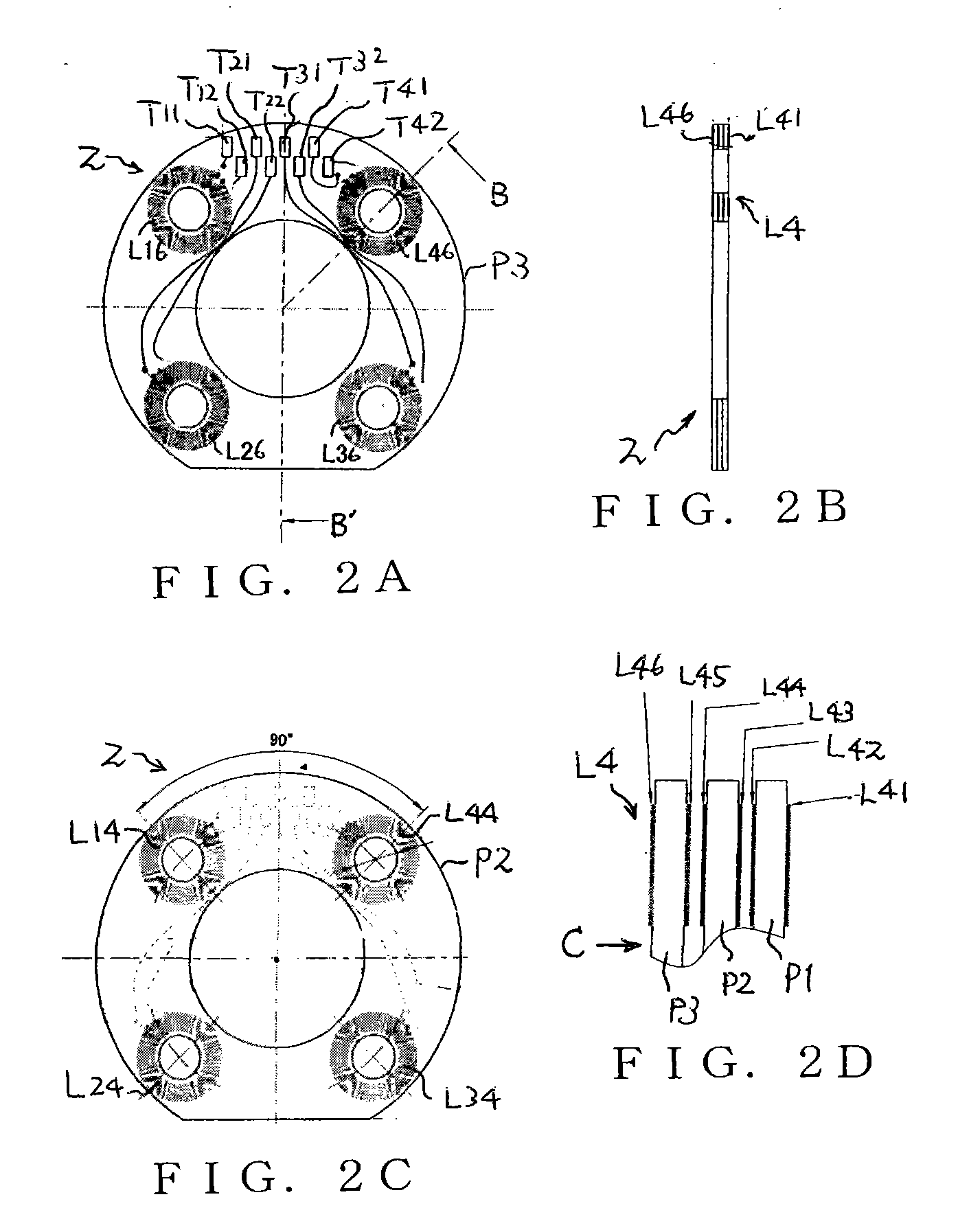Position sensor
a position sensor and noncontact technology, applied in the direction of converting the output of the sensor electrically/magnetically, instruments, dynamo-electric components, etc., can solve the problems of failure and temperature drift compensation of the throttle position sensor using the failure of the detection accuracy of the magnetic resistance element, and the inability to detect continuous positions, etc., to achieve the effect of increasing the overall inductance of the entire coil pole, reducing the over manufacturing cost of the position sensor
- Summary
- Abstract
- Description
- Claims
- Application Information
AI Technical Summary
Benefits of technology
Problems solved by technology
Method used
Image
Examples
Embodiment Construction
[0022]FIG. 1A is a front view schematically showing a construction of a rotary-type position sensor, FIG. 1B is a schematic sectional view taken along the A-A′ line of FIG. 1A. This rotary-type position sensor comprises a stator section and a rotor section. The stator section includes a coil section 2 mounted in a sensor case 1, and the rotator section includes a rotor shaft 3 rotatably mounted to the sensor case 1 and a rotor 4 that comprises a magnetism-responsive member mounted on the rotor shaft 3 so that it can be rotationally displaced together with the rotor shaft 3.
[0023]The coil section 2 includes a plurality of coil poles L1, L2, L3 and L4 disposed at predetermined intervals along the circumference of the coil section 2. In the instant embodiment, four coil poles L1, L2, L3 and L4 are provided at 90° intervals, so that rotational positions over one full rotation are detectable. However, the number and intervals of the coil poles are not so limited. In the coil section 2, e...
PUM
| Property | Measurement | Unit |
|---|---|---|
| electrical angle | aaaaa | aaaaa |
| mechanical angle | aaaaa | aaaaa |
| magnetism-responsive | aaaaa | aaaaa |
Abstract
Description
Claims
Application Information
 Login to View More
Login to View More - R&D
- Intellectual Property
- Life Sciences
- Materials
- Tech Scout
- Unparalleled Data Quality
- Higher Quality Content
- 60% Fewer Hallucinations
Browse by: Latest US Patents, China's latest patents, Technical Efficacy Thesaurus, Application Domain, Technology Topic, Popular Technical Reports.
© 2025 PatSnap. All rights reserved.Legal|Privacy policy|Modern Slavery Act Transparency Statement|Sitemap|About US| Contact US: help@patsnap.com



